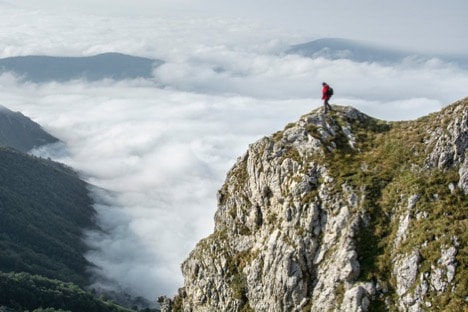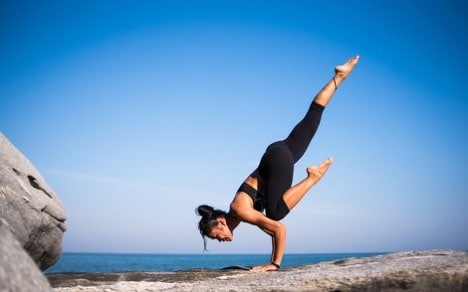Ever wonder why elite athletes seem obsessed with training in places that would leave most of us gasping for air or drenched in sweat? From high-altitude mountain ranges to humid jungles, there’s a method behind the madness—and it’s not just about looking tough on Instagram.
Extreme condition training isn’t some niche trend. It’s a proven way to push your body beyond its comfort zone so that when it’s go-time—whether on the track, field, or court—you’re not just ready, you’re unstoppable.
So, what exactly happens when you train at altitude, in oppressive heat, or with reduced oxygen levels? More importantly, how can you apply this to your own fitness journey—even if you’re not an Olympian? Let’s dig into the science and the strategies.
Altitude Training: Elevate Your Endurance
Altitude training takes place thousands of meters above sea level—think Denver, Colorado or the Andes in Peru. At these elevations, the air pressure is lower, which means every breath delivers less oxygen. That may sound like a drawback, but for athletes, it’s a goldmine for adaptation.
With less oxygen available, your body is forced to work harder just to meet basic energy demands. This triggers a cascade of physiological changes that make you more efficient once you return to sea level. Some key adaptations include:
- Increased red blood cell count to improve oxygen transport
- Enhanced lung capacity and more alveoli (tiny air sacs)
- Greater capillary density, improving circulation
- Stronger, more efficient heart function
Take the Kenyan distance runners, for example. Many of them grow up and train in the highlands, giving them a natural advantage when competing at lower elevations. Their bodies have become oxygen-transport machines.
Heat & Humidity Training: Master the Art of Thermoregulation
If you’ve ever tried working out in the middle of summer, you know it’s a different beast. Now imagine choosing to train in 90% humidity or scorching desert heat. That’s exactly what many professional athletes do—and for good reason.
Why put your body through this? Because in high-heat or humid environments, your body’s ability to cool itself is tested to its limits. Sweat doesn’t evaporate as efficiently, and your core temperature can spike fast. But with repeated exposure, your body adapts.
Here’s how:
- Increased sweat rate for faster cooling
- Expanded blood plasma volume to maintain hydration and circulation
- Improved cardiovascular efficiency under heat stress
- Reduced insulation (like subcutaneous fat) to aid heat dissipation
Teams like the Australian rugby squad often train in tropical climates before major tournaments, giving them an edge when game day arrives in hot, unforgiving venues.

Hypoxic Training: Simulate Altitude Without Leaving the Gym
Not everyone has access to the Alps or the Andes. That’s where hypoxic training comes in. Using chambers or masks that reduce oxygen concentration, you can simulate the effects of high-altitude training without ever leaving your city.
Unlike altitude training, where all atmospheric gases are reduced, hypoxic environments control only oxygen levels. This distinction allows for more precise programming.
Why use hypoxic training?
- Accessibility: No need to travel to high elevations—it’s available in many performance centers and gyms.
- Control: Oxygen levels, humidity, and temperature can be fine-tuned to mimic competition conditions.
- Consistency: You avoid the cold or logistical challenges of mountain training while still gaining cardiovascular benefits.
Hypoxic training is especially useful for sports like cycling, MMA, or soccer, where endurance and fast recovery are key. Athletes report improvements in lung function, stamina, and recovery rates even after short-term exposure.
So, Should You Train in Extreme Conditions?
If you’re an amateur athlete, weekend warrior, or simply someone who wants to level up your fitness game, incorporating elements of extreme condition training—safely—can absolutely help. That might mean a few sessions in a hot yoga studio, booking a weekend trail run at elevation, or trying an altitude mask for interval workouts.
But a word of caution: These methods aren’t for beginners. Your body needs time to adapt, and pushing too hard too soon can backfire. Consult a professional coach or physician before diving into high-stress training environments.
The Takeaway: Discomfort Builds Resilience
Ultimately, the magic of extreme condition training isn’t in the altitude or the heat—it’s in what those environments demand of your body. They force adaptation, resilience, and grit. And that’s a lesson that applies beyond sport.
So next time your workout feels too easy, ask yourself: Am I just staying comfortable, or am I getting better?
- How Automated Dispensing Cabinets (ADCs) revolutionized point-of-care medication administration? - November 23, 2021
- How to Select the Best and Most Affordable Fitness Tools - October 31, 2021
- What is Causing the Trend of Nursing Turnover and How to Stop It - August 24, 2021


